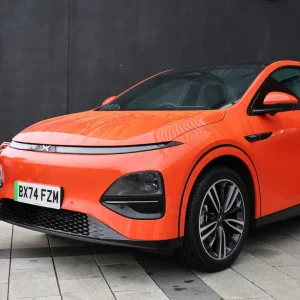There is no denying that telematics technology has had a significant impact on the motoring sector but the potential it harnesses for the insurance industry is substantial.
Technology such as telematics and usage-based devices can provide data that will heavily influence motor insurance but up until now usage based insurance (UBI) has been mostly used by the young driver market.
Usage based insurance appeals to younger drivers as they typically have little or no driving history, meaning their policies tend to be high as they pose a bigger risk. UBI means the amount they pay for motor insurance is based on the vehicle usage, measured against the time and distance that they drive, as well as driver behaviour based scoring.
However with the rise of telematics technology, UBI could be revolutionised for company cars so that it has capabilities beyond the young driver market and provide real business benefits.
With this in mind, since the start of the year we have been focusing on developing our telematics software so that it has the potential to provide more comprehensive data than ever before.
Due to our unique position as both a breakdown service and telematics provider, we have access to a wide range of data which means we are able to show how the driver and their vehicle behave. By providing live updates through the telematics unit, insurers will be able to base policies on dynamic, real-time driver and vehicle information, rather than relying on retrospective driver history. Nobody else in the market is able to offer what we are now talking about, simply because they don’t have the range of data that the RAC has access to.
By understanding how the vehicle is behaving as well as the driver, insurance providers can make accurate and in-depth decisions about insurance policies rather than basing policies on historical data that can often not be representative of the driver.
For example, by analysing the stress on the brakes, the average speeds and the health of key components and parts, the insurer will understand a lot more about how the policy holder is driving the car and the condition of the car.
One tool that will prove particularly powerful is true First Notification of Loss, or FNOL. With the software we now have and the analysis of the data, we are able to tell exactly what has happened in the case of an accident, including speed, direction and location.
But even more, at slow speeds, we can determine whether the vehicle has been involved in an accident, or if it has hit a speed bump or kerb, with an accuracy rate of 92%. As a result, disputes over liability for accidents at slow speeds could be a thing of the past.
We know telematics has provided significant benefits to fleet managers, whether that is by encouraging better driver behaviour or providing that extra element of security to both employees and their vehicles. But we are yet to see the way it can impact the insurance industry.
This new sophisticated software will further free up fleet manager’s time and reassure business car drivers that decisions made on their insurance or incidents that happen whilst on the road, will be based purely on factual, real time information.
The technology is still in the early stages and unlike the RAC most providers won’t have access to all the necessary data yet. However with the support of telematics, I believe the insurance market and specifically usage based insurance will have a more profitable model. By raising the levels of sophistication one step further, usage based insurance will soon be ready for the mass market.





